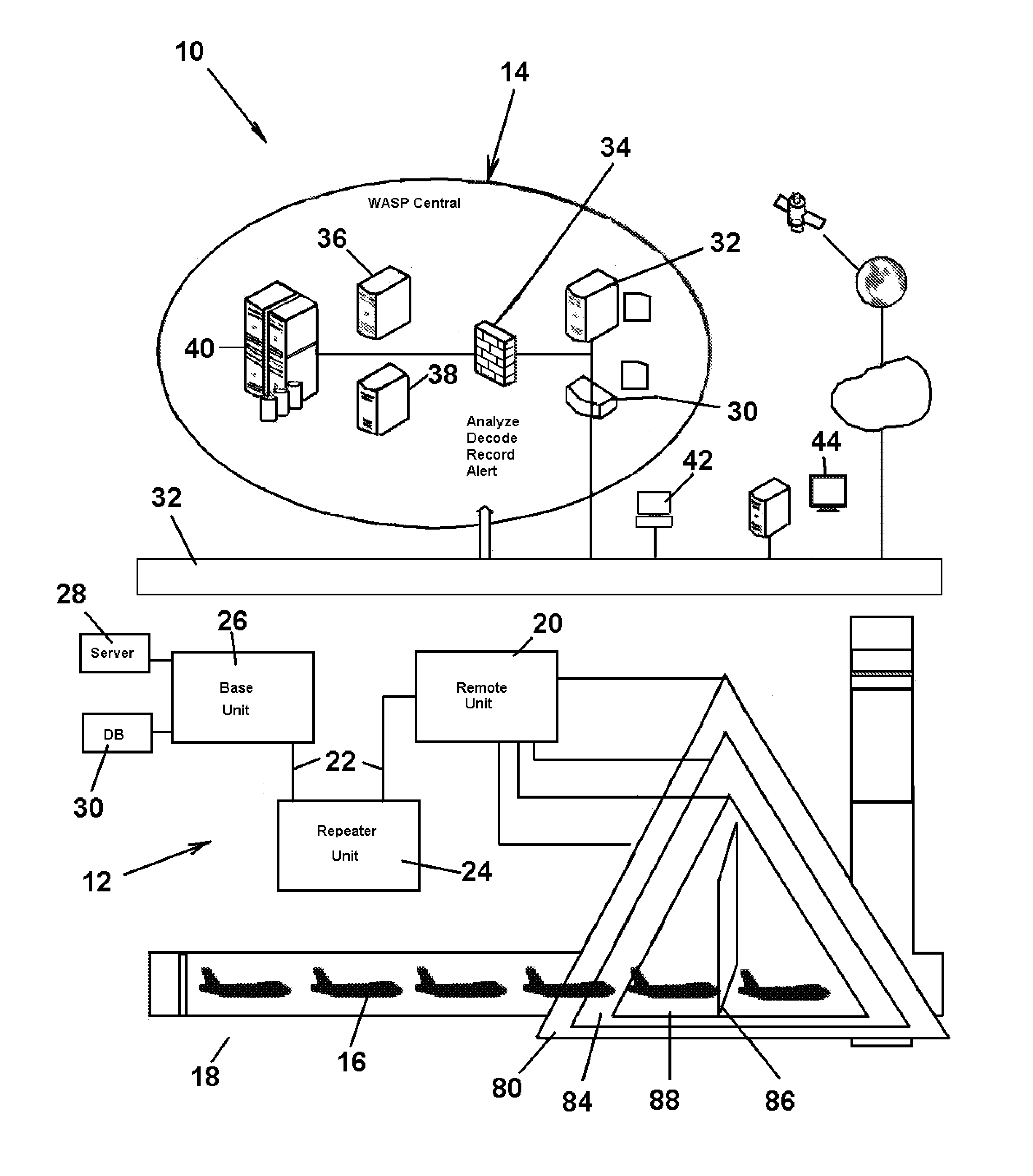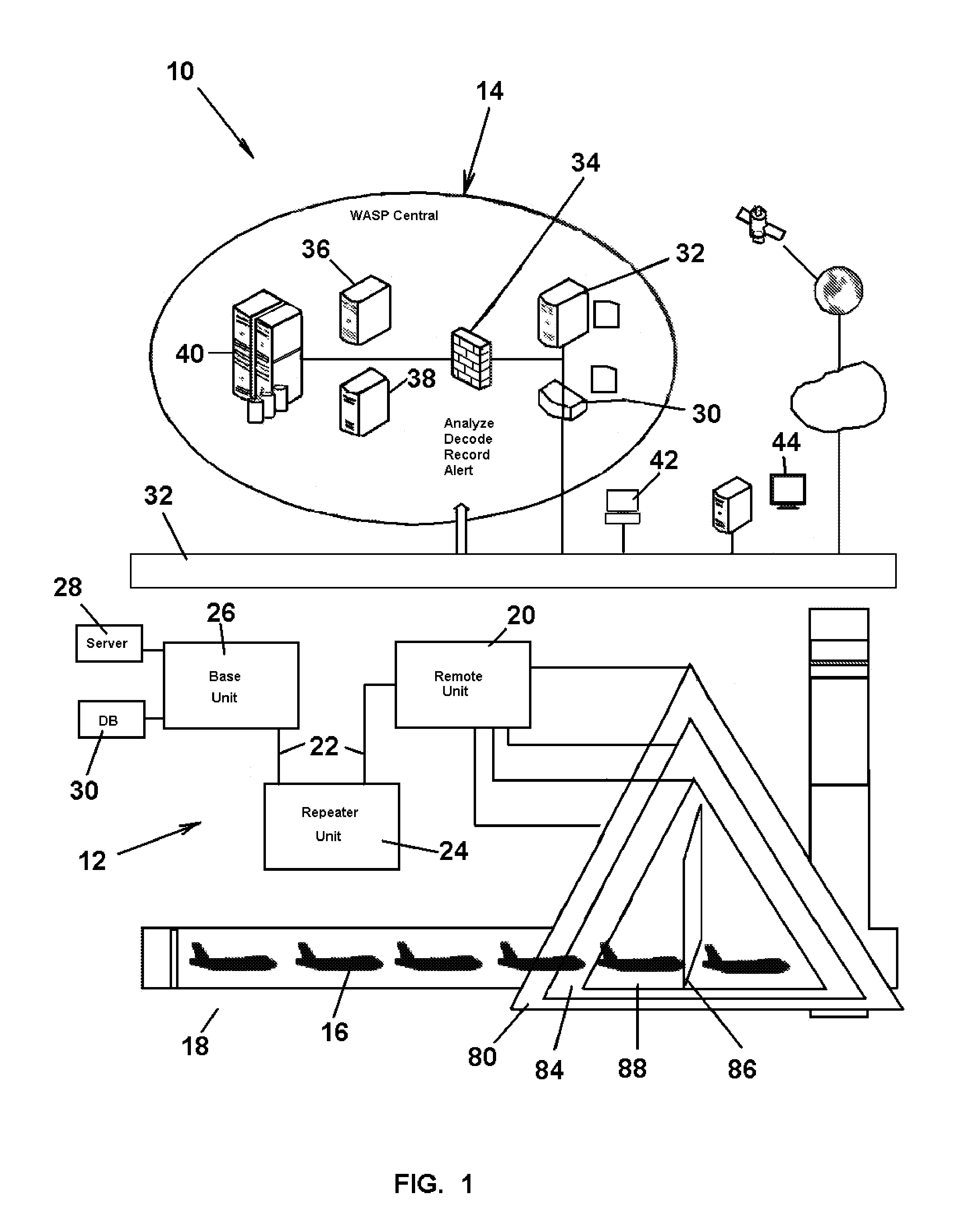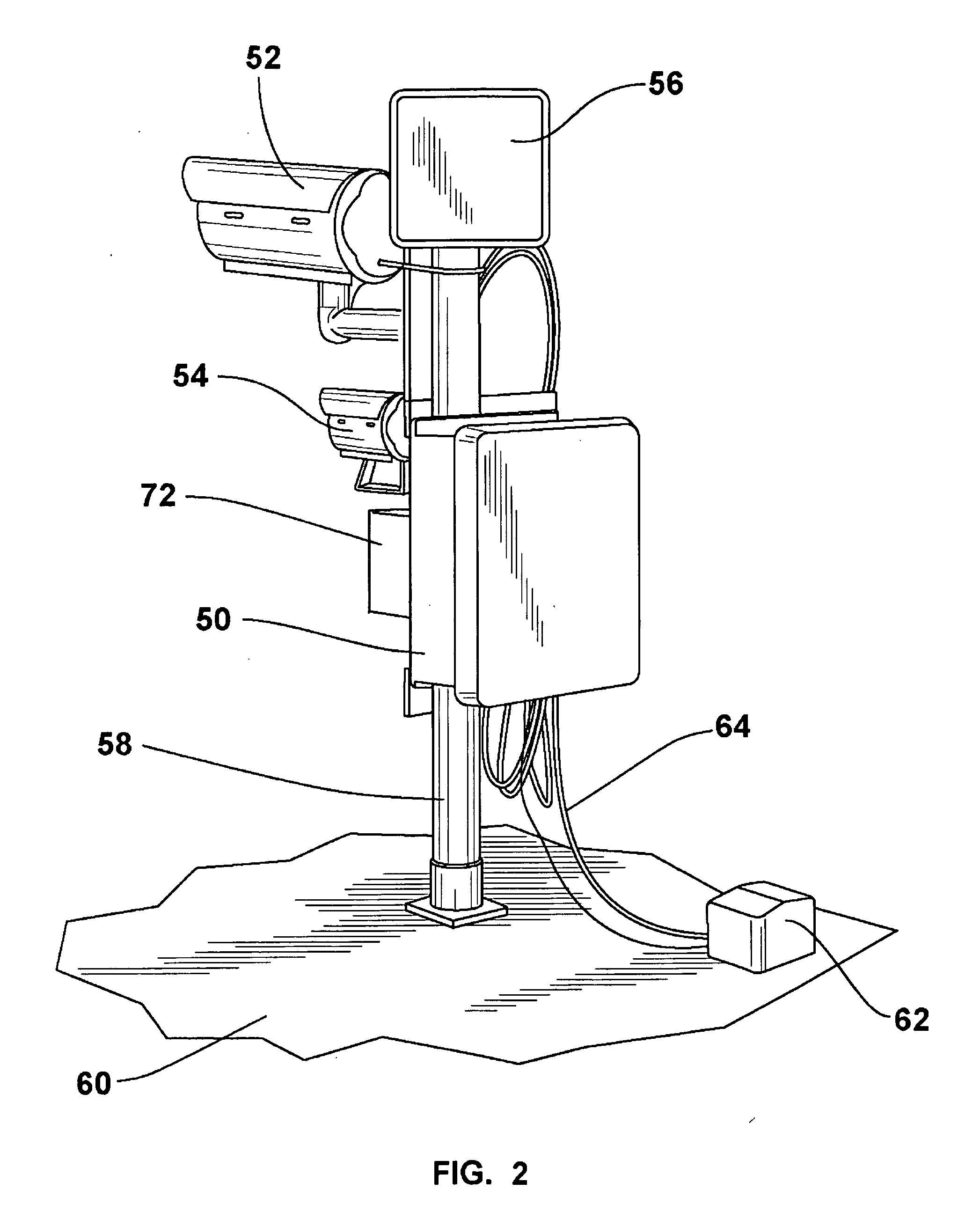Aircraft monitoring and identification system
a technology for identification systems and aircraft, applied in the field of aircraft monitoring, can solve problems such as potential problems, limited information, and small facilities such as general aviation airports, and achieve the effects of aircraft traffic control, and reducing the number of aircra
- Summary
- Abstract
- Description
- Claims
- Application Information
AI Technical Summary
Benefits of technology
Problems solved by technology
Method used
Image
Examples
Embodiment Construction
[0024]Referring to FIG. 1, an aircraft monitoring and identification system 10 includes a tail number information system (ATNIS) 12 at an airport that interfaces with a central remote wireless airport surveillance platform (WASP) 14 to detect, identify, capture, decode, and record pictures of all arriving and departing aircraft 16 on airport pathways 18. Based on transferred information thereon, the platform 14 produces electronic alerts of aircraft on watch to authorized parties and reports on detected aircraft activity to interested parties, such as the local airport. The ANTIS system 12 includes free standing remote stations or units 20 positioned at various key locations, such as taxiways and connectors, on the available airport traffic pathways for detecting arrivals and departure movements. A multiplicity of remote stations may be used, dependent on the complexity of the available traffic patterns. The system will be described with reference to a single remote unit for purpose...
PUM
 Login to View More
Login to View More Abstract
Description
Claims
Application Information
 Login to View More
Login to View More - R&D
- Intellectual Property
- Life Sciences
- Materials
- Tech Scout
- Unparalleled Data Quality
- Higher Quality Content
- 60% Fewer Hallucinations
Browse by: Latest US Patents, China's latest patents, Technical Efficacy Thesaurus, Application Domain, Technology Topic, Popular Technical Reports.
© 2025 PatSnap. All rights reserved.Legal|Privacy policy|Modern Slavery Act Transparency Statement|Sitemap|About US| Contact US: help@patsnap.com



